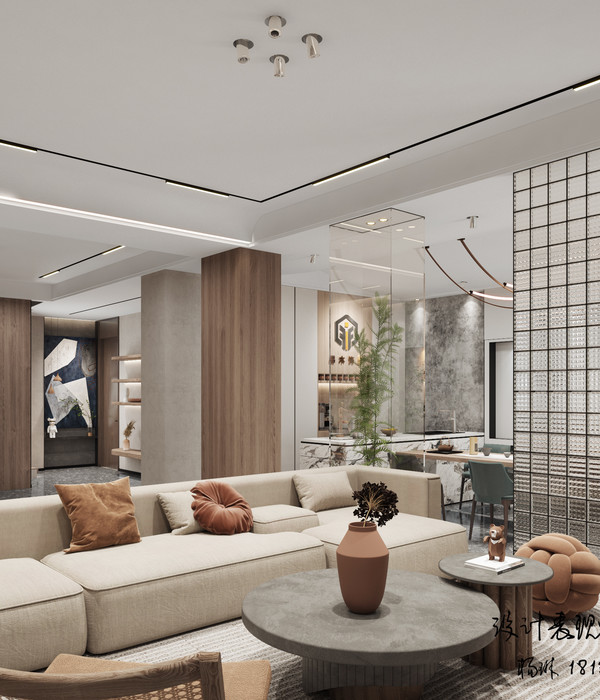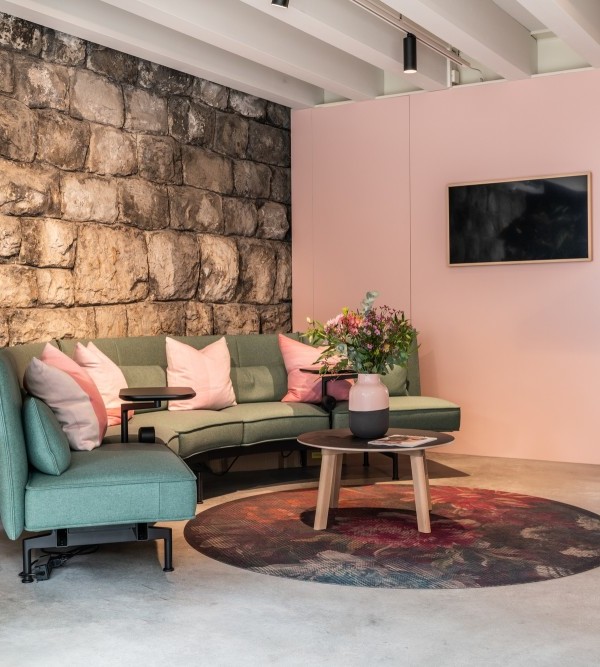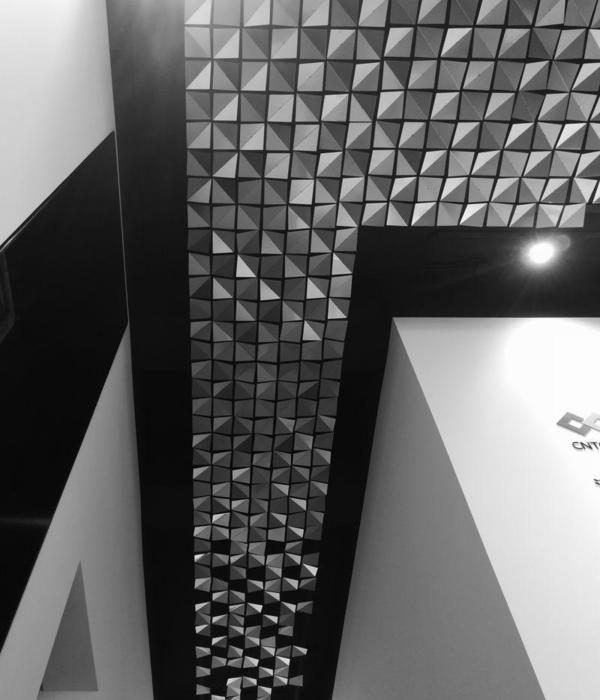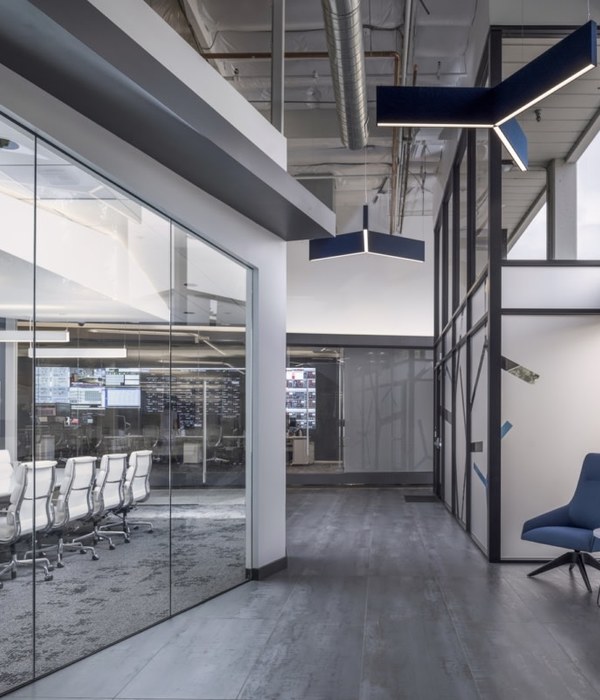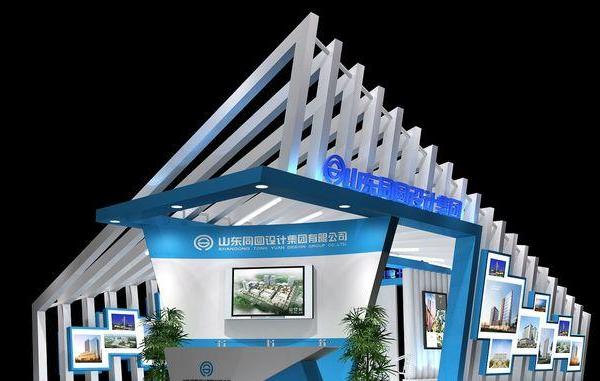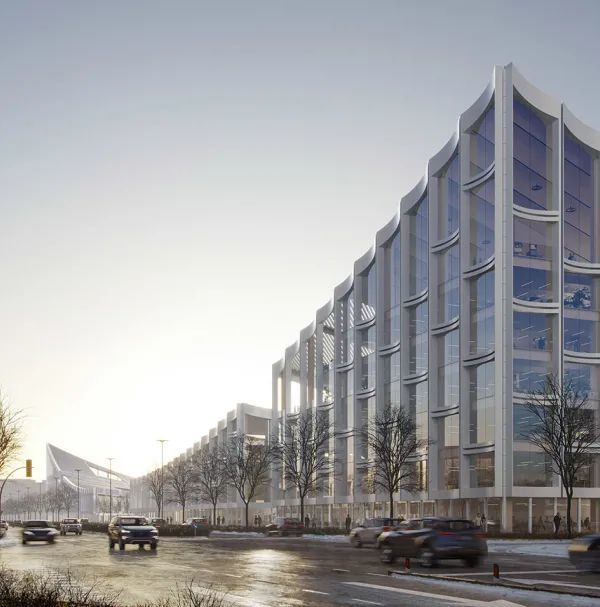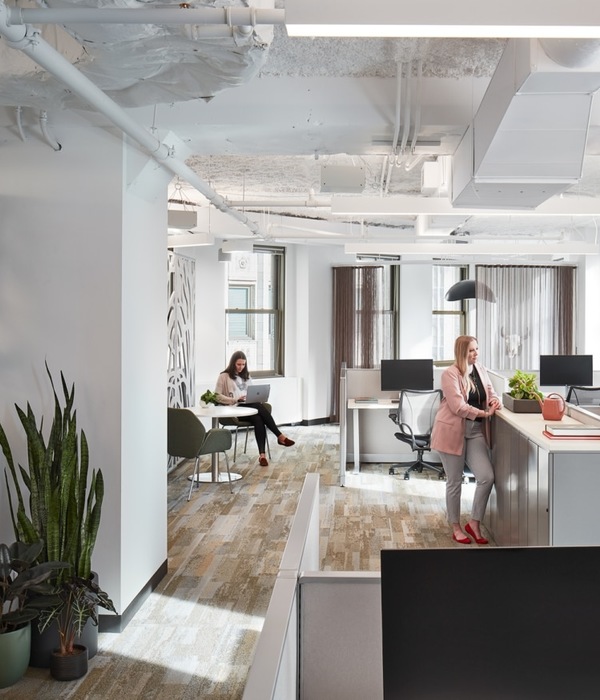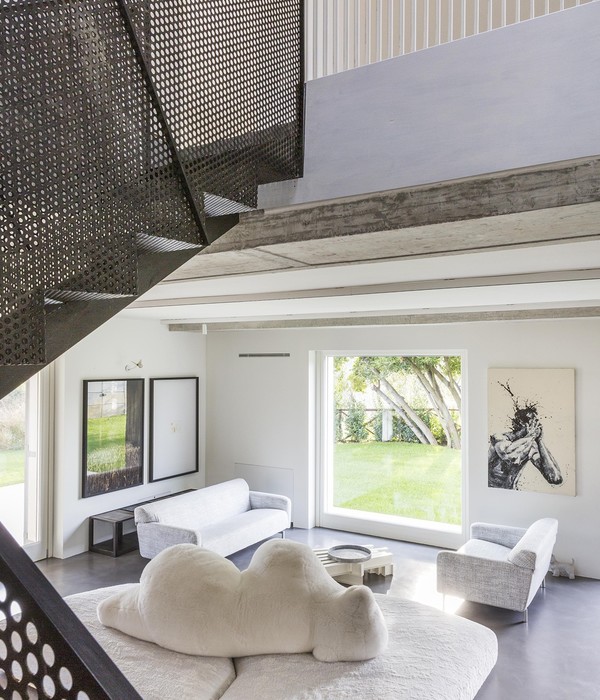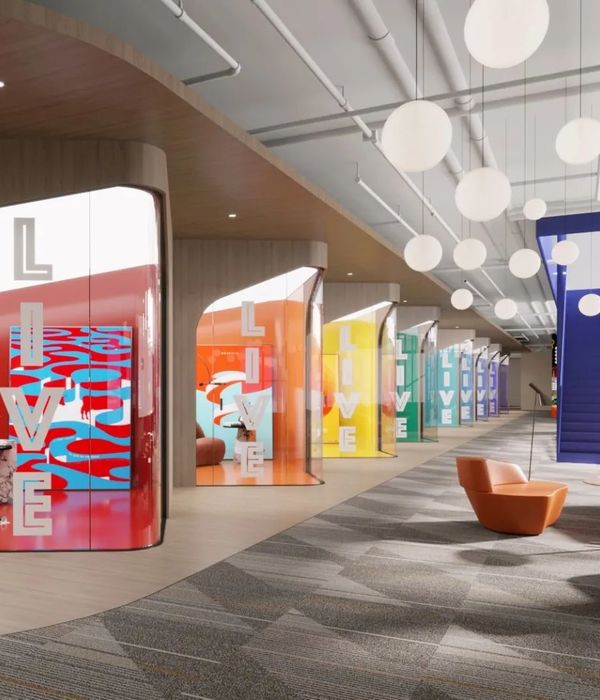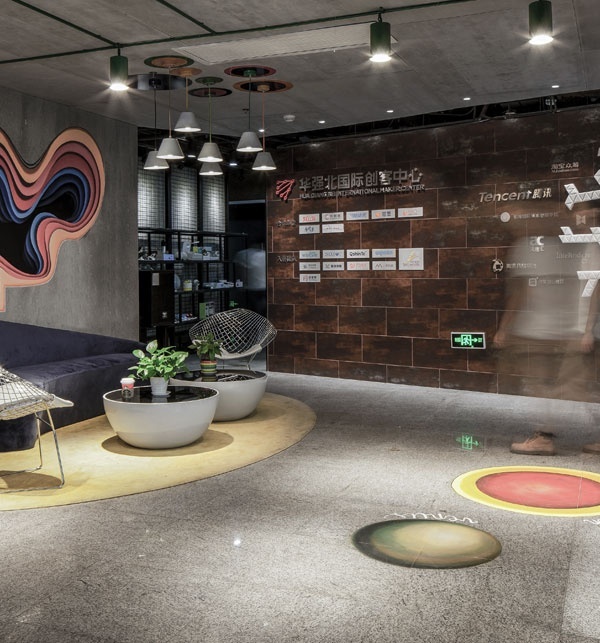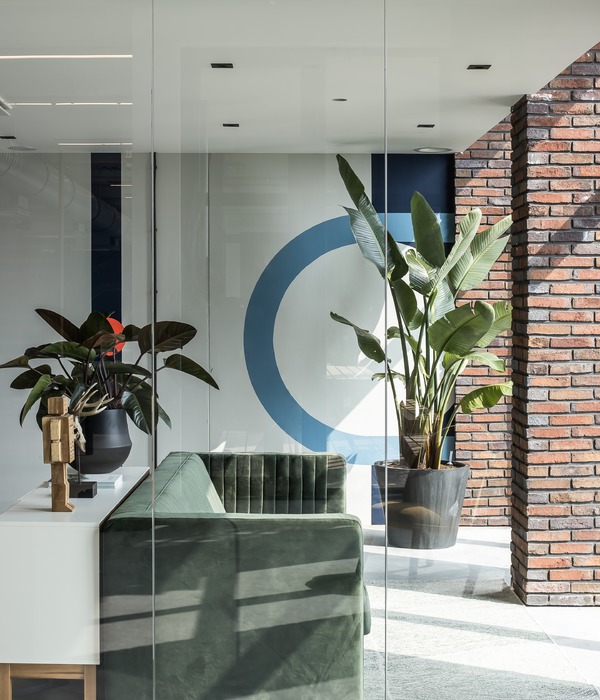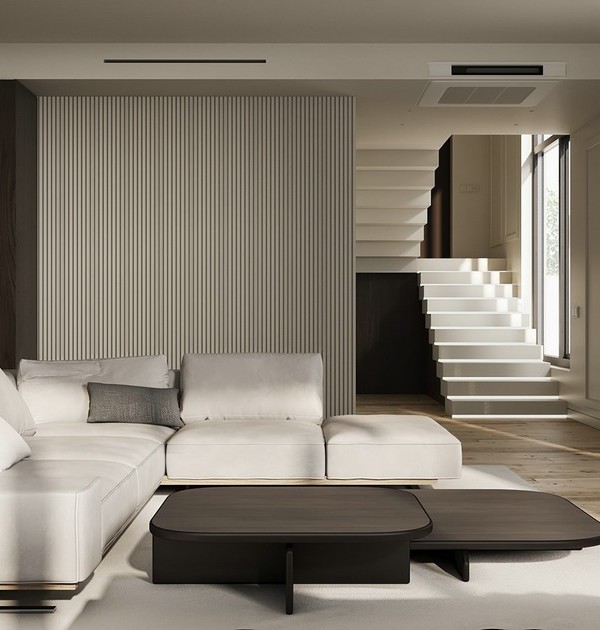- 项目名称:Crossboundaries 北京新办公室 | 融合生活与工作的混合空间设计
- 场地面积:300 平方米
- 设计周期:2020年12月-2021年1月
- 建设周期:2020年12月-2021年2月
- 竣工时间:2021年2月
- 建筑师:Crossboundaries,中国,北京
- 设计团队:Elena Gamez Miguelez
- 施工方:北京艺豪建筑装饰设计工程有限公司
背景Background
受新冠肺炎疫情影响,人们的日常生活与工作环境发生了显著变化。全球大多研究表明,人们更倾向于一种混合的工作方式,那么在环境、社会和文化三者之间的全新生态中,我们又能发现它们之间有着怎样的相互作用?将生活模式与办公模式有机的融合是我们在新办公室设计中给出的答案。
By the end of 2020, the two most significant typologies for everyday use as a society were abruptly shaken by COVID-19. The home as a place of life and the office as a place of work were under reconsideration. Most of the worldwide surveys indicate that more than 65% of people expect to work in a hybrid scenario after the pandemic. Which kind of synergies can be discovered in a new ecology between environmental, social and cultural dimensions? The answer should be a living environment that actively transforms the office’s modes.
▼空间概览,overview
改变、挑战与机遇
Time for change, Challenges and opportunities
在过去,人们设计办公室时多要考虑员工人数、客人访问频率或会议室数量等客观因素。现如今伴随着办公室文化变革和无形化组织的产生,公共场所中的社交距离与私密空间中的社交关系成为新的社会问题。办公室前所未有的需要成为更加灵活多变的社交与生活空间,并为员工提供家一般的安全、温暖和包容。
▼场景展示,scenarios
Former physical considerations to design an office such as number of workers, frequency of guest visits or amount of meeting rooms are accompanied now by the discussion of office culture and intangible beliefs of the organization. Isolation in publicity and sharing the private had become new paradigms. Now more than ever, the office needs to be a showcasing interface of dynamic business life while workers can also integrate the feeling of “being at home”: represented by a sense of safety, warmness, and inclusivity.
▼灵活多变的社交与生活空间,a showcasing interface of dynamic business life
研究人员还指出,人们更希望在一个明亮的,充满绿色植物和沐浴阳光的环境中度过工作时光。造成这种现象的关键因素有两个:一是人们内心中对自然和优质生活环境的渴望;二是科学家证明的自然对身心健康的正向影响。办公环境中,如果有两面或更多墙面有窗户,不仅可以提供更好的通风,还具有更长时间的光照,从而营造出更好的绿色氛围,更多聚会和放松的感觉。
Researchers have also pointed out how people want to spend time in green environments that are also bright and receive enough sunlight during the whole workday. This is mainly driven by two key factors: the desire of improvement in the quality of life caused by a natural concern for health safety, and proven link to physical and mental health care preservation. Spaces with more than one light exposure side provide better ventilation, and the sun turn is present for longer hours, allowing for a better greenery atmosphere which will revitalize the sense of gathering and relaxation.
▼休闲区内部视角,view in the lounge
超越工作环境,有弹性的创新空间
Beyond workspace, Reinforcing innovation in resilience
考虑到所有因素,Crossboundaries开始设想未来工作环境需要适应各种快速变化的场景。 公司联合创始人蓝冰可(Binke Lenhardt)说:“虽然新办公环境相较之前在尺寸、氛围、楼层等都有新的变化,但是我们坚持把工作室设立于三里屯。以便延续我们一直以来坚持——工作室、社交活动和讲座相结合的模式。”我们已经扎根在三里屯,希望新的办公室同样能成为一个 “社区中心”。
Taking all of this into account, Crossboundaries started dreaming of a future typology that could fluctuate and adapt to a variety of rapidly changing scenarios. While some design factors were open for reconsideration -size, atmosphere, occupation and communication strategies- the workspace location remains intentionally unchanged. The company has been deeply rooted in the same Sanlitun neighborhood after years of combining the studio with social engaging events and lectures for the community. Therefore, the commitment with this Beijing area prevailed.
▼开放空间,open space
新办公室位于一所经历多次翻新的五层教学楼顶层,由新钢结构连接到原有建筑物的混凝土骨架上。这里拥有东、南和北三个方向的开窗,提供了近乎 360 度的开阔视野,以确保全天阳光充足。联合创始人董灏说:“之前的租户将空间分割为不同的私人办公室,我们首先就决定要拆除这些隔断,为的是带来更丰富、更开放的环境,不设边界更符合我们创作实践的理念。”新办公室设计还重点探究了工作环境与绿色植物的联系,这也是Crossboundaries对未来办公空间的憧憬和对可持续发展的响应。同时在设计中,Crossboundaries的建筑师们充分尊重现有建筑结构和结构韵律,并考虑了办公室所处的城市环境,以及工作中的家具和软装的再利用。
▼轴测图,axonometric
Located in the top floor of a five-story educational institution that had already undergone several renovations, the office was a fairly new add-on steel structure attached to the concrete skeleton of the building. This provided an almost 360-degree view and exposure to North, South and East that assure sunlight throughout the day. However, the previous layout that used to provide private offices had to be removed, to bring a richer and vivid open plan, more accordingly to our creative practice.
Formerly based in an industrial space, the renewed office should reconnect with nature and greenery as a way of addressing global emergencies of caring and well-being. The users were not the only agent to be taken into account: cycles and rhythms of the architectural building, its urban surroundings -even the furniture and logistics that the architectural practice needs to operate with- were all factors to work with.
▼看向开放办公区,view of the open working area
面对禁止在现有屋顶结构和所有外墙上焊接、悬挂或附加任何新元素的挑战,建筑师以最少元素连接了300平方米的空间,力求最小化变动。主要采用定制金属连接,在物业允许的范围内实现创造性的解决方案。
Faced with a challenge of prohibition on welding, hanging, or attaching any new elements to the existing roof structure and all external walls, the design becomes very effective in satisfying Crossboundaries’ company needs while articulating the 300 m.
2
space with very few elements, therefore committing to minimum intervention. Particular attention was given to each construction detail, mainly resorting to customized metal connections for achieving creative solutions within the limitations explained by the building’s management.
▼空间中的定制金属连接,customized metal connections
▼模型资料区,material and reference library area
办公室东侧相对独立,提供了私密的会议室、厨房、储藏室和休息区,这些区域被一道波纹板隔墙分开,既保证了空间的分隔,又保证了阳光的通透。联合创始人蓝冰可(Binke Lenhardt)说:“我们将上一个办公室巨大悬挂式书架巧妙的设置在了西侧墙面,这里是整个办公室中唯一没有窗户的实体墙面。我们很高兴可以重复利用之前的家具,它仍旧被用于置放材料和参考图书,以及精选模型和 Crossboundaries获奖展示。这既是资源的再利用,更是记忆的延续。”
A functional strip offers separated meeting rooms, kitchen, storage, and rest areas that are included into a former repurposed mezzanine level to maximize organization. These rooms are physically separated with a semi-transparent double layered wall made from polycarbonate corrugated panels. The West wall is the only continuous solid wall without windows, which accommodates a vast hang shelving that includes the material and reference library, together with a selection of models and Crossboundaries Award display.
看向会议区, view of the meeting rooms
主体办公空间是一个开放、流畅的空间,建筑师在空间中央巧妙的设计了一个轻巧的曲线型金属框架体系,并布置了可开合的窗帘,将不变的工作区域与中央多功能空间连接在一起。后者是一个休闲区,致力于提供正常工作之外的不同场景:可以通过家具重新布置,和窗帘位置变化,以满足空间随时间推移的各种要求,并满足声学上隔声吸声需求。
The main space is fluent and continuous, shaped by a lightweight curtain structure that functions as an island and connects the invariable working stations area together with a central multifunctional space. The latter is a leisure area focused on providing different scenarios beyond the regular working day: the loose furniture can be re-arranged and separated acoustically to meet the various requirements of the space over time.
▼波纹板外表皮,polycarbonate corrugated panels
地毯的花纹遵循窗帘轨道布置,进一步强化了分区的概念,并暗示用户探索空间的灵活性。整体灵活空间可以成为5-8人的休闲会议、20-30人的分享活动、晨间瑜伽活动、晚间电影分享活动、快闪展览空间等。
And the carpet design follows the curtain rail to further reinforce this zoning concept and hint at the users to explore the flexibility of the space. More than five activities and meetings –both formal and informal- can happen at the same time, providing specific atmosphere for each communication processes.
地毯花纹遵循窗帘轨道布置,the carpet design following the curtain rail
整体空间延续之前办公室的色调,黄色已成为 Crossboundaries 的企业标识:灰色、黄色元素和纹理的组合形成了空间独有的特色。在搬迁过程中,将原办公室的植物一起带了过来,它们提升了室内空间的品质,并引入了自然元素。这些植物被放置在可移动的平台上,根据不同的时节和需求,可以自由变换位置。
This multifunctional space is supported by an inherited color palette from the previous office that had already become the corporate identity of Crossboundaries: a combination of grey and yellow elements and textures bring focus and stimulation to the team. A number of inner vegetation islands were not to be left behind in the moving and they contribute to the layout by adding another color while integrating natural elements inside the office. The plants sit into movable platforms, behaving like attractors around the office, each time in a different position.
私人空间,private rooms
▼从二层窗洞看办公区,view on the second floor
虽然疫情给企业本身带来了巨大的转变,但Crossboundaries认为,办公空间设计需要具有前瞻性。新办公室最大化的利用了原有家具和艺术品——桌子、椅子、窗帘、灯具、书架……,带给大家记忆的温暖。Crossboundaries 将继续分享办公空间,将人们聚集在一起,把我们的办公室作为一个社区中心来运营。
While the pandemic has brought radical transformations to business itself, Crossboundaries believes that the design of office spaces also has the need to undergo a forward-looking approach. This working platform has merged with a sense of domesticity where the existing is revitalized and incorporated by reusing every furniture and art piece that was once part of the former workplace – tables, chairs, curtains, lamps, shelves… So that whenever socializing is more back to normal, Crossboundaries will continue to share their space and bring people together: “We try to run our office as a community center”.
厨房区,kitchen area
▼品牌标识,VI design
项目名称:变形金刚 —— Crossboundaries 新办公室
地址:中国,北京
场地面积:300 平方米
设计周期:2020年12月-2021年1月
建设周期:2020年12月-2021年2月
竣工时间:2021年2月
建筑师:Crossboundaries, 中国,北京
项目负责人:蓝冰可 (Binke Lenhardt)、 董灝
设计团队:Elena Gamez Miguelez
施工方:北京艺豪建筑装饰设计工程有限公司
摄影/摄像:白羽
Project name: Crossboundaries’ transformable workplace
Location: Beijing, China
Usable area: 300 m2
Design period: Dec.-Jan. 2020-2021
Construction period: Dec. 2020 -February 2021
Completion date: Februray 2021
Architect: Crossboundaries, Beijing, China
Partners in charge: Binke Lenhardt, DONG Hao
Design team: Elena Gamez Miguelez
Construction Company: Beijing Yihao Building Decoration Design Engineering Co.,Ltd.
Photographers: BAI Yu
{{item.text_origin}}

